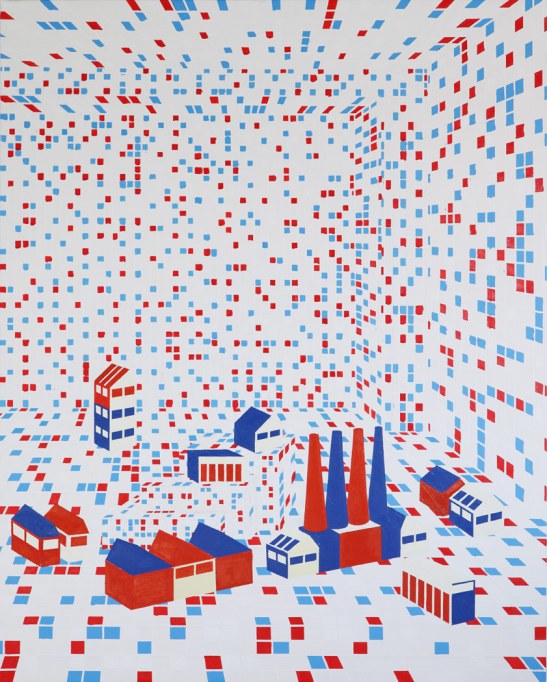ISCP Open Studios 2013
I was fortunate enough to have visited the open studios at the international studio & curatorial program
(ISCP) in Brooklyn this past weekend. While the work on display in many cases was heavy on conceptually laden socio-political and environmental themes, there were also some wonderfully poetic examples of visual artists exploring material, form and process that leaves an impression that some of these visual artists, thankfully, continue to be interested in the sublime.
Ann Cathrin November Høibo, from Norway, explores minimalistic juxtapositions of raw material and images. Her interest and work with fiber art and loom work was evident in the thoughtful approach to weaving materials in a loosely considered way that reminded me of the work of Richard Tuttle.

I don’t need you anymore, I’m into Carl Andre now, 2011, Installation view
Courtesy of the artist and STANDARD (OSLO), Photo: Vegard Kleven
Austrian, Isa Rosenberger has created a thoughtful meditation on war and death by revisiting Kurt Jooss’s celebrated dance work “The Green Table”; an anti-war theatrical work created in 1932, which has transcended times of war and culture and revived most famously by the Joffrey Ballet in the United States as a response to the Vietnam War. Rosenberger explores the themes of this work through a series of choreographed episodes that point to the corruption and the brutality of war.
Farah Atassi is a prolific painter of large scale systematic and pictorial spaces that ride a fine line between lyrical geometric abstraction and playful spaces inhabited by urban and industrial edifices. The surface of her canvases are built up with a graphic line and form, reminiscent of the pixelated imagery of early video games. Ghost images embedded in the textural surface reveal the artists process and serve as an echo of decisions and archetypal forms which span the iconic columnar structures of Brancusi to Albrecht Dürer’s polyhedron from his 1514 engraving Melencolia I.
Moritz Partenheimer‘s startling large scale photographs of starkly contrasted landscapes are a remarkable reflection on contemporary architectural spaces that might be otherwise overlooked, but Moritz captures these images with a theatrical and sculptural sensibility which is was also expressed in a large wall installation of white plastic shopping bags pinned up in a large scale grid, creating a texture and lightness of form, recontextualizing the all too common and deplorable detritus of our times.
Anouk Kruithof is a Dutch artist exploring image and process through photography. Her work is expansive encompassing video and sculptural installation as well. She explores formalism from color and structure as well as collage and juxtaposition, while operating as a sort of archivist, revisiting older works from her photographic taxonomy of imagery and shredding, stacking, and re-contextualizing her work for us to consider the transient nature of these images and the lives they reflect.
In one project she has collected an archive of photographic images which are stacked in a pile reminiscent of Felix Gonzales-Torres’ works such as “Death by Gun”, 1993. Her photos in various works are then organized by color, context, grid, scale and in some cases shredded, formed into an installation and then captured in rhythmic video works that show the shredded paper pile growing and contracting. In one installation she has taken a group of images and hung them in a grid over the heads of viewers in an installation. Her work operates equally well in abstract architectural spaces and the format of the traditional linear book.
Also notable are the works by the American Kevin Beasley whose sculptural interventions transform trash and contemporary artifacts from q-tips to crooked baby carriages cast into a large scale tablet of foam and plastic.
Anastasia Ax from Sweden had some visceral large works on yellowed card stock paper slathered in a series of black painted symbols as well as a series of textural explorations of torn and collage piles, seemingly remnants of the making process.
The International Studio & Curatorial Program (ISCP) is a nonprofit, residency-based contemporary art institution located on the border of Williamsburg and Bushwick Brooklyn.








